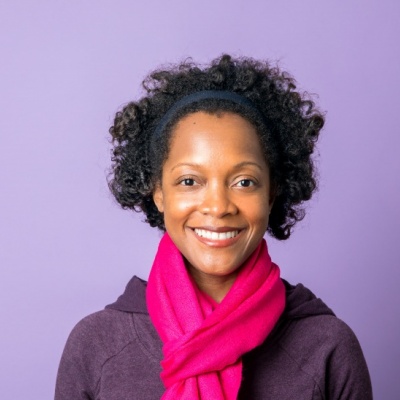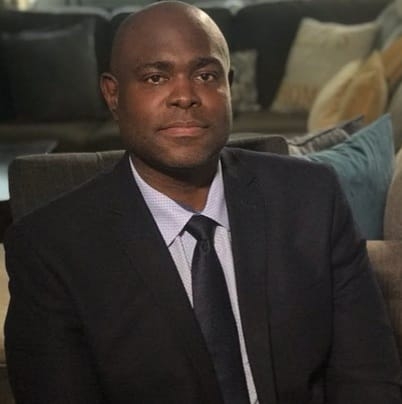When Long Beach State communications professor Ebony Utley was young, she knew she wanted to attend Northwestern University.
Years later, she was admitted to graduate school and, at the time, became the youngest Black woman to attend its master’s and doctoral programs.
But the program wasn’t the dream her younger self envisioned.

Utley realized that she didn’t have any instructors that looked like her. And her white male professors reminded her when they told her she “didn’t belong.”
“I always wanted to be the person I wanted to study with,” she said, recalling her experience at Northwestern. “It would have made a difference; I had Black peers who did [have Black instructors], and it meant a lot to them. “Now, I try to be that for my students.”
Utley said her experience is common among people of color who are pursuing university-level teaching degrees, and teaching statistics reflect that. White faculty make up nearly 59% of all faculty members at CSULB, according to spring 2020 campus data.
Black faculty make up just 4.1%.
The faculty statistics contrast CSULB’s student population which is comprised of 72% students of color, according to spring 2020 data.
CSULB has seen an overall increase in Black faculty members over the past seven years, with Black faculty headcounts rising from 67 in fall 2013 to 96 in spring 2020. During that same time, white faculty increased from 1,309 to 1,373.
Made with Visme Infographic Maker
Within each department and college, however, this growth is not equally reflected. Some colleges, such as the College of the Arts, saw a decrease in Black faculty from 11 in 2013 to just seven in spring 2020, according to campus data.
According to John Hamilton, assistant vice president of university access and retention, retention of faculty of color can be attributed to Black faculty not having the same resources as their white colleagues.
“If I’min a white-dominated department or college, or if I’m white, it’s going to be easier for me to seek out help,” Hamilton said. “It’s going to be easier for me or for someone to come to me to say, ‘What do you need?’”

Hamilton also oversees the CSULB Black Faculty & Staff Community program, a service that provides resources for the Black campus community.
“The purpose[of BFAS] was to reign Black faculty and staff together to create some synergy for us to do more work together,” he said. “And to show our Black students on campus the unity we have, so we can do more mentorship with them.”
But Hamilton said more needs to be done at the college and department levels.
His solution: training and mentoring faculty and administrators to help faculty of color “get through their first two to five years.”
“Training, not only for the junior faculty but also training for our senior faculty,” Hamilton said. “Some of our senior faculty may not have the skills to work with some of our faculty of color.”
Black faculty members may also take on “more work” outside of what their white faculty counterparts may have to do, Hamilton said.
“Sometimes faculty of colorare sought out by students of color to do additional work,” he said. “The student doesn’t know it’s additional work, they just know that ‘I see a Black face that looks like me. And maybe that is someone I can talk to about what’s going on. Maybe that’s someone I can do some research with. Maybe that’s someone that can be a mentor.’”
Research has shown that test scores improve among students of color when they are taught by someone who looks like them or reflects their cultural background. According to a 2017 community college study by Pew Research Center, students of color who had an instructor of the same race or ethnicity performed up to 20% better in their courses.
What CSULB is doing
To help bridge the hiring gap, President Jane Close Conoley put forth a “diversity hiring initiative” over the summer that looks to diversify faculty at CSULB by hiring more faculty of color, especially Black faculty.
“Getting people of color on our faculty is just the first step,” Conoley wrote in an email to the Forty-Niner. “We have to build a climate of equity so all can flourish. We have a lot of work to do to be sure our policies and practices are not supporting systemic racism.”
This initiative is a product of a program that began around two years ago, Hamilton said.
According to Hamilton, the Office of the Provost began placing equity advocates in each of the colleges, who assess job descriptions and work with search committees to make sure the hiring process is done from an “equity-minded foundation.”
“We make sure that process is at growth and that people are not coming in with all their racial biases against a person of color,” Hamilton said.
Other than the equity advocacy, though, there is no “centralization” for hiring, according to Conoley, which attributes to the lack of diversity in many departments.
“Faculty searches are quite distributed,” Conoley wrote in an email. “Often, faculty look back to their own graduate programs for new professors. If that program is not diverse, we tend to get people who look like the search committee.”
The College of Liberal Arts has seen the most growth in faculty of color and is currently the most diverse college at CSULB, though this is partly due to it being the largest college as well as the college that oversees the ethnic studies departments.
Made with Visme Infographic Maker
Even as the most diverse college on campus, it’s still composed of 59% white faculty.
The new California State University ethnic studies requirement, to be implemented during the 2023-24 academic year, could help increase faculty representation.
“The new requirement for an ethnic studies requirement is likely to increase the number of our faculty of color as we have to cover a lot more sections of ethnic studies classes to meet the intent of [Assembly Bill 1460],” Conoley wrote in an email. “I expect a lot of change.”
Conoley also said that a number of faculty retiring “will allow for more new hires.”
What other institutions are doing
Morehouse College, a historically Black college, has partnered with other universities to get its recent graduate and doctoral students hired as faculty. One of the partnerships includes the University of California system.
In 2012, the UC system started a fellowship program with historically Black colleges and universities to diversify UC Ph.D. programs, which include students of color who will go on to teach at colleges and universities, according to the UC Office of the President.
“During the initiative’s first seven summers, UC hosted over 550 scholars across nine UC campuses,” a statement from the UC Office of the President read. “As a direct result of this initiative, 60 Ph.D. students and four academic master’s students are currently enrolled at UC; seven Ph.D. students and eight master’s students have already graduated.”
Ohio State University has also promised to diversify its faculty. Two years ago, university officials began aggressively searching for people of color to fill faculty areas for-hire.
The University of Wisconsin at Madison started the act of “cluster hiring” faculty, which hires faculty of color in groups of five to 10 at once. The “cluster” of new faculty is then placed in the same department or program together.
According to the university, this helps build a community among the new hires and, since its implementation in 1998, the initiative has been instrumental in the hiring of nearly 150 faculty members, according to UW-Madison data.
Due to the looming California budget cuts, however, CSULB may not be able to hire faculty of color as quickly as it would like as it remains in a “hiring freeze” for the foreseeable future.
“With the hiring freeze, we have a challenge,” Conoley wrote in an email. “I have not been approving new staff positions and approving only temporary hires for existing staff positions for this year.”
According to Utley, though, until the “pipelines” for aspiring Black faculty are addressed, numbers will remain “not surprising.”
“It’s not a savvy opportunity cost,” Utley said, citing her experiences and those of her Black colleagues and her students. “I tell [my students] not to [go to graduate school].”
Julia Terbeche, news editor, contributed to this story.




